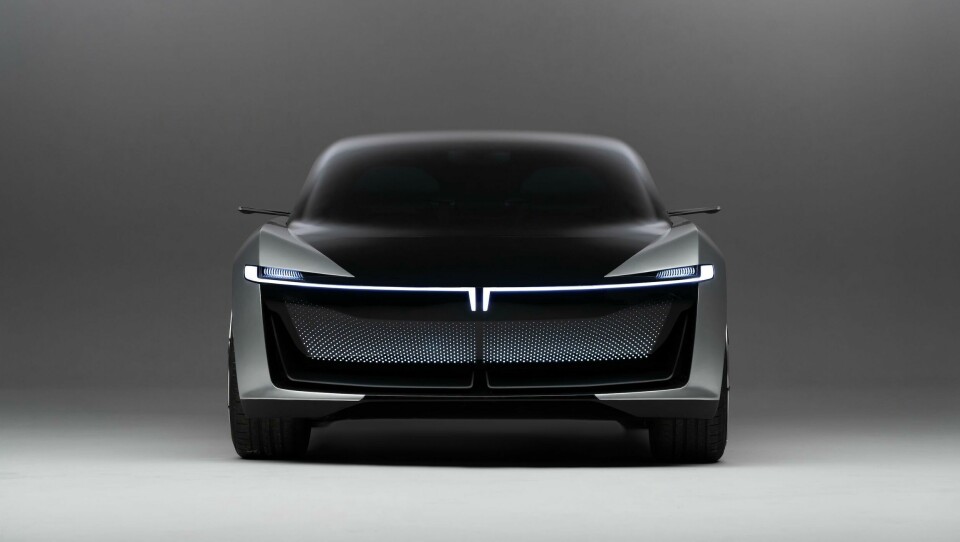
First Sight: Tata Avinya concept heralds premium EV push
The Avinya concept showcases Tata’s new EV-only platform, a move upmarket and a desire to sell in more international markets for the Indian industrial powerhouse
The Avinya concept signals Tata’s upmarket aspirations. To find out more about the concept’s catamaran inspiration, hidden features and 2025 production deadline, Car Design News jumped on a video link with Tata Motors’ head of design, Martin Uhlarik, soon after its official April 29th unveil.
“We got the brief from management eight months ago to develop a design for a pure EV platform,” Uhlarik told CDN. “Tata is a leader in electrification in India but now we’re looking at where we go long-term, with no more compromise between ICE and EV.” The development of the concept was pretty quick as Uhlarik continued: “The design department came up with this theme in three weeks, I presented it to management and they loved it. Three months later we had a full-size model and now we have the working prototype.”
The first production EV on this new platform is due in 2025 and the speed of the project was relevant. According to Reuters, Tata management already announced an ambitious plan in 2021 to have 10 electric models in production by 2026. This would help the wider country’s carbon reduction goals by having EVs represent 30% of new car sales by 2030. Currently, that figure is just 1% of about three million cars a year.
Viewed only through a computer screen, the Avinya appears long and large, but it is actually quite compact. Uhlarik says it is roughly 4.3m long, 1.9m wide and 1.55m high, very similar to the Peugeot e-2008. However, the Avinya’s EV-only platform allows for a significantly longer 2.9m wheelbase to unlock greater interior space versus the e-2008’s 2.6m, which has to share its underpinnings with internal-combustion engined variants. The Avinya’s extra space between the axles should also accommodate more batteries – Tata is targeting a 310-mile (500km) range and a 30-minute recharge time – where the e-2008 and similar EVs currently only manage circa 200 miles.
To stay above the sometimes challenging Indian roads, the Avinya has a 200mm ground clearance and the whole package is described in the press release as combining “the essence of a premium hatch, the luxuries and versatility of an SUV and the roominess and functionality of an MPV”. Does Uhlarik agree? “With this platform, whatever the class of vehicle, you can offer more space and then make it more inviting and enjoyable,” he said.
“It’s a five-seater with a bench seat at the back. Maybe the MPV part is more an association with roominess, and an overall feeling of space with the windscreen and A-pillar so far forward. The aircon unit now fits into the nose of the vehicle, which again unlocks a lot of space and because you don’t need a traditional transmission tunnel, that’s another opportunity.”
In terms of aesthetics, there are distinctive details on the Avinya too. At the side, in front of the rear wheel, there is a sharp and dark diagonal graphic ‘cut’ from the upward-sloping black rocker panel which not only looks good, but has function too. “It’s an air curtain,” Uhlarik explained. “This car has a competitive silhouette and through aerodynamic testing we’re developing a very strong drag co-efficient. We were informed this was the best position for that intake, so we combined it with the sill to become a nice graphic.”
And what of the aforementioned catamaran inspiration? “The whole lower part of the concept’s front – the digital grille – is also a huge air spoiler,” he said. “The original design was inspired by the timeless elegance, simplicity and shape of a catamaran sailboat. The silver parts on each side of the Avinya are the hulls and the black area in-between is where air can come through.”
Sailing references continue along the Avinya’s side. The floating and forward-leaning C-pillar has a sail-like graphic and at the back, the full-width rear light bar with its elongated and abstracted T-shape, quietly references Tata. “When we made the full-size model we had that floating C-pillar graphic on the side angled like a sail and one of the designers suggested the horizontal light bar push further out to become an indicator.
It had the appearance almost of an aerofoil like on professional sail boats, and even its position suggested good functionality, so it all came together. It makes the car look super-wide and dramatic on the road. It’s narrower than the overall width of the car too, so I’m pretty sure it’s no more obtrusive than a mirror.”
The Avinya’s cabin is a simple space, with no large central screen, little ornamentation and a two-tone colour palette, all aimed at creating calm for drivers and passengers alike. “The terracotta colour is very popular in the Indian landscape so we wanted to come up with something that is not a pastiche, but at the same time clearly identifiable as warm and giving a feeling of quality.”
Despite these India-focused references, the Avinya is set to be sold well beyond that country and into other international markets, perhaps as an upmarket, higher-priced electric sub-brand like Ioniq is to Hyundai. Other right-hand drive markets are tipped to be good starting points, “I don’t want to divulge which ones yet,” said the UK-based Uhlarik with a smile, “but I’m planning to have one in my garage”.
All of which leads to the final big question which is whether this platform could be shared with Tata sister brands Jaguar and Land Rover? “From a brand point of view we have our distinct identities and customer demographics but at the same time we will seek synergies,” Uhlarik said before adding, “a lot of technologies can be complementary, it just makes business sense. We have a lot of know-how we can share.”












































































